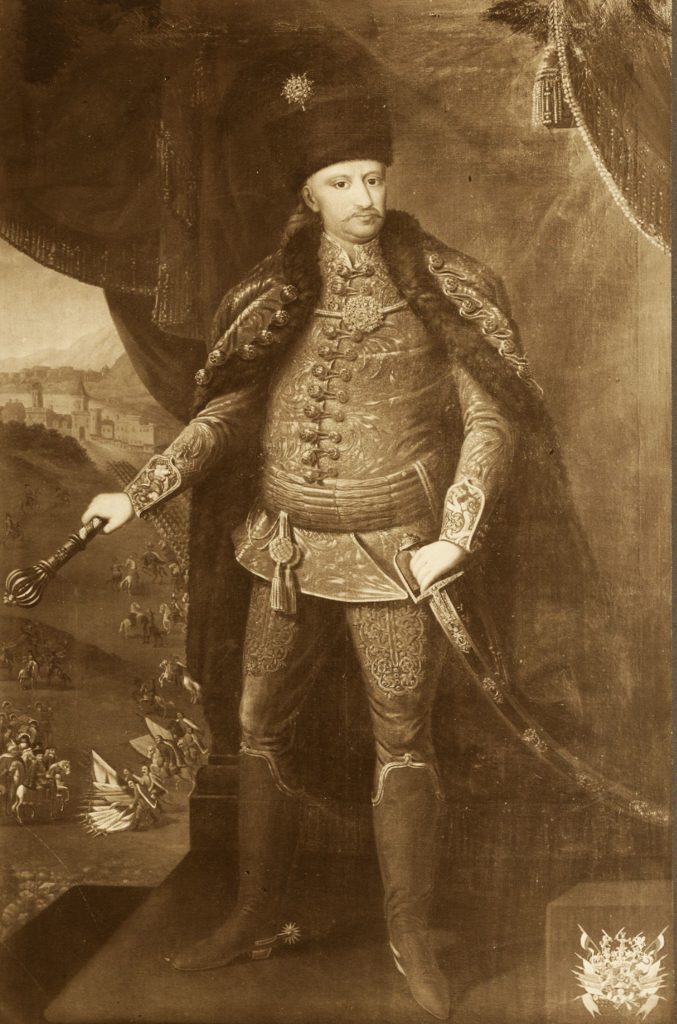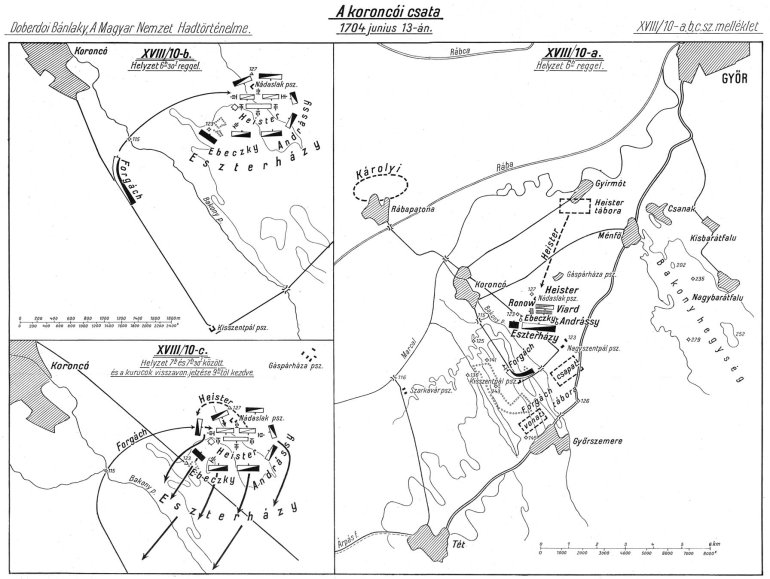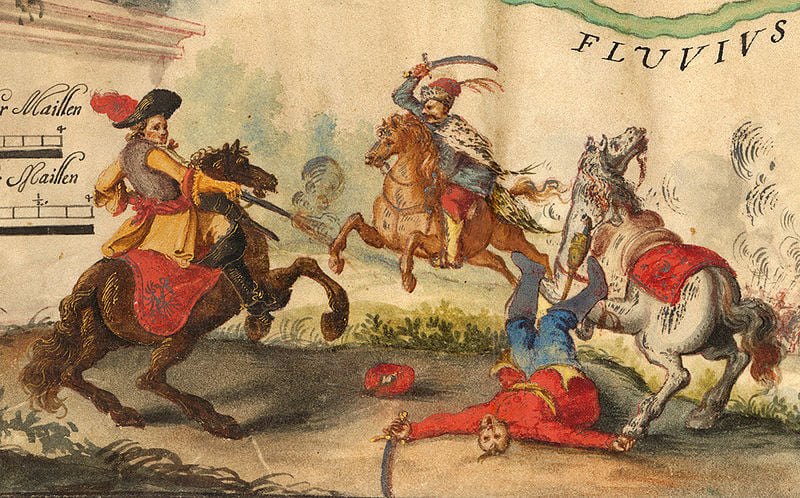This was the first real field battle of the Rákóczi War of Independence (1703-1711), where the main armies compared their strengths.

In May 1704, Bercsényi Miklós sent General Forgách Simon, who had recently sided with the Kuruc (anti-Habsburg) forces, to Transdanubia, and he soon swore allegiance to Rákóczi. However, he considered his army insufficient against Heister, who had left Komárom and urged the commander-in-chief to send the army of Károlyi Sándor to him. This could be done only after the victory at Szomolány on May 28, when Károlyi was sent to the Transdanubian region with about 4,000 men.

However, he did not join Forgách but started a raid towards Austria and plundered the surroundings of Vienna. On the 9th Heister camped near Győr, at Gyirmót, when Forgách approached him with his troops. He was preparing for a battle with the imperial generals to prevent them from retreating to Vienna. This was prevented by Károlyi, who had arrived in Rábaköz in the meantime.

Although the Kuruc troops were numerically superior, the experienced combat infantry numbered only about 3,000. Most of the army was recruits and cavalry, while the Imperials had trained regular infantry. Under Heister, there were 1,600 infantry and 2,000 Serbian and Croatian cavalry. His cannons, however, outnumbered those of the Kuruc.

On June 12, Károlyi arrived on the left bank of the Rába, and Forgách hastened his crossing to catch Heister, who had formed his troops in battle formation during the night, between two fires. Forgách, however, was not unprepared for him, and Heister was unable to take advantage of the element of surprise. The Kuruc general gathered his troops, entrusted the bulk of his 11,000-strong army to Esterházy Antal, and ordered him to attack from the front.

He himself, with his 7,000 cavalry, was about to surround the Imperials from the west in the cover of a hill. Outnumbered by the Kuruc, their army could easily encircle the enemy, whose cannonade halted their advance. The Imperials turned on the Kuruc on all sides, who stood their ground but dared not attack.

By 7 a.m. Forgách’s cavalry had arrived, so the Kuruc cavalry on the left flank went on the offensive, pushing the Imperial line. However, there was an interesting moment when the charging general was not followed by his troops into the killing cannon fire but stopped on the top of the hill. On the right flank, Andrássy also took courage and attacked, but the rifle fire only confused the battle lines.

The cavalry charge created a gap in the Kuruc front line, into which the Imperial cavalry, led by Heister himself, rushed. Despite the personal courage and orders of the Kuruc officers, the troops began to flee. First, the left flank was broken up, then the cavalry.

The disintegrating Kuruc army fled toward Tét, Mórichida. Many of them perished in the swampy floodplain of the Rába, and Heister’s cavalry pursued them all morning. The Hungarian cavalry had a better chance of surviving the battle, but the infantry was shattered.

Forgách fled towards Pápa, then around 14-15 met Károlyi in Sárvár, who – although he heard the battle – could not intervene in the fight, his vanguards arrived at the Koroncó field after the battle. The crossing of the Rába, the journey that had been made and the fighting had exhausted Károlyi Sándor’s army.

Heister managed to crush the Transdanubian Kuruc army in one battle, but he did not manage to regain the Transdanubian part of the country. In fact, he had to retreat towards Magyaróvár. The battle resulted in the death of about 2000 Kuruc and 100 Imperial troops. The rebel officers cannot be accused of cowardice, nor was Forgách a traitor, as was later rumored. The defeat was caused by the lack of training, indiscipline, disobedience to orders, lack of trained noncommissioned and commissioned officers, and lack of adequate infantry and artillery, so characteristic of the Kuruc army.

Rákóczi tried to find a solution to this problem throughout the War of Independence but failed. The Kuruc lost the open-field battles, but the smaller raids, harassments, ambushes, and superior numbers were able to compensate for the losses in the battles for years.
Source: Szibler Gábor
Dear Readers, I can only make this content available through small donations or by selling my books or T-shirts:
Please, support me with a coffee here: https://www.buymeacoffee.com/duhoxoxa
You can check out my books on Amazon or Draft2Digital, they are available in hardcover, paperback, or ebook:
https://www.amazon.com/dp/198020490X or at https://books2read.com/b/boYd81

My work can also be followed and supported on Patreon: Become a Patron!http://Become a Patron!
Become a Patron! and donations can be sent by PayPal, too: https://tinyurl.com/yknsvbk7


https://hungarianottomanwars.myspreadshop.com/all
Subscribe to my newsletter here: https://tinyurl.com/4jdjbfkn


